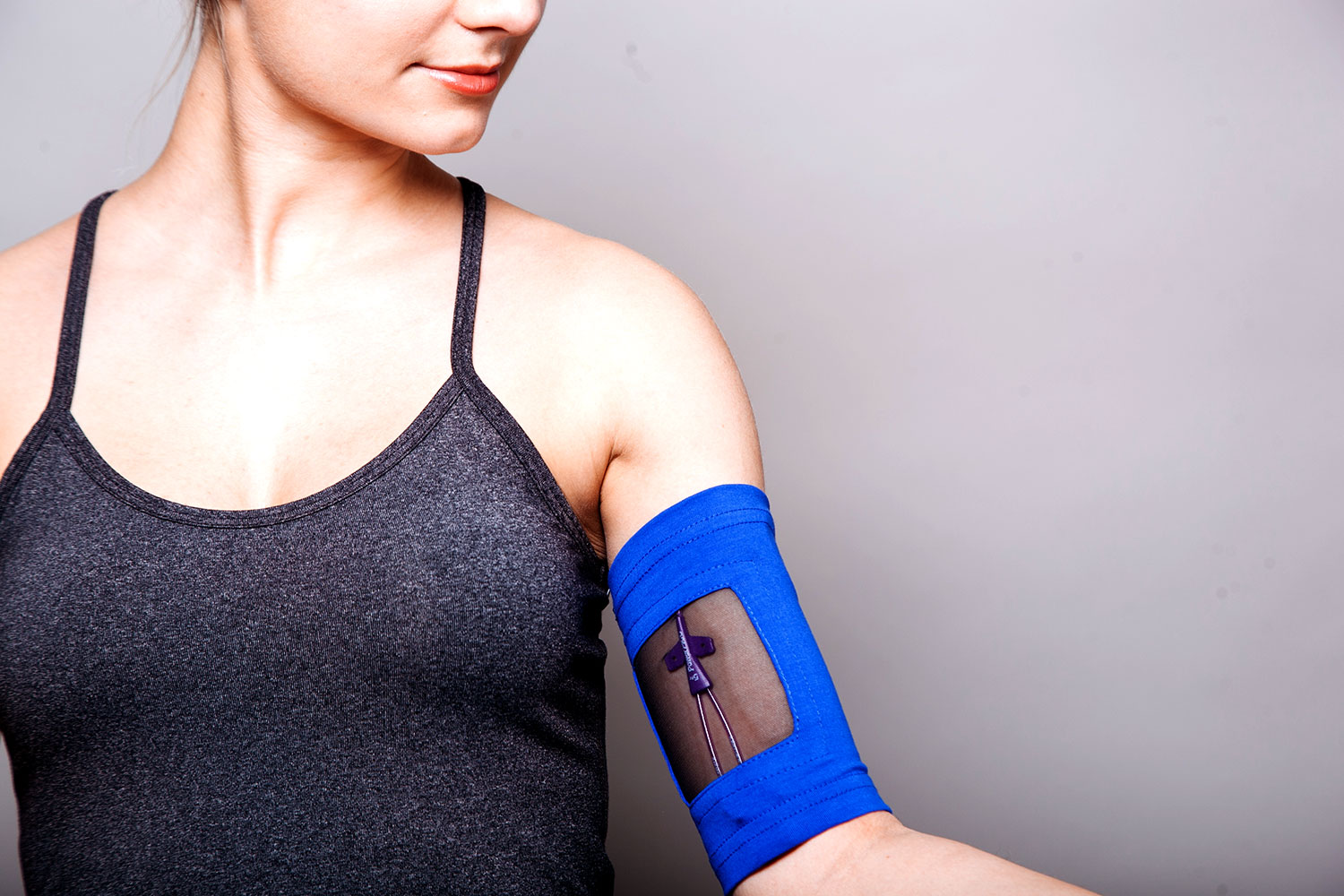After having a central catheter inserted in their arm, some patients are told that their best option for covering and protecting the insertion site is a cut-off tube sock.
Peripherally inserted central catheters, called PICC lines, are typically inserted in a vein in the patient’s arm to provide intravenous treatments like chemotherapy or extended antibiotic therapy and are often in place for several weeks or months. Walking around with a tube sock on your arm for that long is not exactly an appealing option, but leaving the site uncovered could cause infections or other problems.
After seeing several friends and family members go through chemotherapy – complete with tube socks on their arms – University of Virginia alumnus Chaitenya Razdan thought there had to be a better way.
“Technology is evolving all around us – we now have self-driving cars, for example – but not a lot has changed in the products that people wear when they are dealing with a chronic health condition,” said Razdan, who graduated from UVA’s McIntire School of Commerce in 2005 and went on to work in banking and consulting.
He reached out to a friend in the fashion business, Susan Jones, and in 2014 the two of them co-founded Care+Wear. The first product they created was an antimicrobial PICC line cover, a soft, breathable sleeve that keeps the PICC line in place, helps deter infection and includes a patented mesh window where patients, nurses and doctors can easily check on the site. The sleeves come in several colors and can even be customized with team logos.
“Our PICC line covers are antimicrobial, and the antimicrobial treatment we use actually regenerates when you put in the washing machine,” Razdan said. “We also use a comfortable fabric that is super breathable and doesn’t constrict airflow like most athletic sleeves do.”

After seeing several friends and family members go through chemotherapy with cut-off tube socks on their arms, alumnus Chaitenya Razdan thought there had to be a better way.
In addition to consulting with patients, Razdan and his team worked with doctors and nurses – including advisers in the UVA Health System – to ensure that their products account for key medical concerns. UVA has already placed an order for customized PICC line covers that will be offered to patients, Razdan said.
Care+Wear also offers specially designed shirts that accommodate and provide easy access to chest ports, another common method of delivering chemotherapy. The women’s shirt includes a short zipper on one shoulder, while the men’s polo shirt has a small zippered panel that can be undone to access the port.
“I was wearing the polo at a health care conference and the nurses I was talking with did not even realize it was specially designed, at first,” Razdan said. “They just thought it was a really nice polo.”

A shirt designed to accommodate and provide easy access to chest ports looks like “a really nice polo,” Razdan said.
For patients dealing with a chronic illness, regaining that sense of normalcy can be a tremendous relief. Care+Wear clients report that the shirts and PICC line covers have helped them attend classes without disruption or self-consciousness, travel without worrying about infection and enjoy special occasions like prom without having to wear a tube sock on their arm. One patient even reported wearing the sleeve while running a race.
“We are creating products that, though they seem simple, are really game-changing for patients and make them feel normal again,” Razdan said. “What you wear should not have to be a reminder of what you are going through.”
Currently, Razdan and his team are partnering with the Parsons School of Design to develop several new products. One designer, Lucy Jones, had already created an award-winning clothing line specifically designed for people in wheelchairs and is now working with Care+Wear to create specialized gloves for wheelchair users.
The company is also designing pants for elderly patients and is even working with Parsons students to brainstorm new designs for the ubiquitous hospital gown, which patients of all ages have long lamented as flimsy and uncomfortable.
Those new ideas, combined with the company’s current success, have attracted backers in both the health care and fashion industries.
“We are getting several people from the fashion world to invest in us, which is very exciting,” Razdan said. “They are focused on making a difference and interested in being active on the health care side.”
For Razdan, it all points to a coming boom in what he calls “the healthwear industry,” centered on designing products that can be used in conjunction with medical treatments to make a direct, positive impact on patients’ quality of life.
“One of my favorite parts about being at UVA was the aspect of student self-governance and being able to make a difference while I was there,” he said. “In consulting and banking, I had awesome clients, but the work was not necessarily my decision and I didn’t feel like I was making a direct impact.”
Now, he and his team know that their products offer patients an immediate improvement.
“Everyday we hear from our customers and members of our community about how we have really transformed their lives,” Razdan said. “That has been awesome.”
Media Contact
Article Information
October 20, 2016
/content/designed-patients-mind

